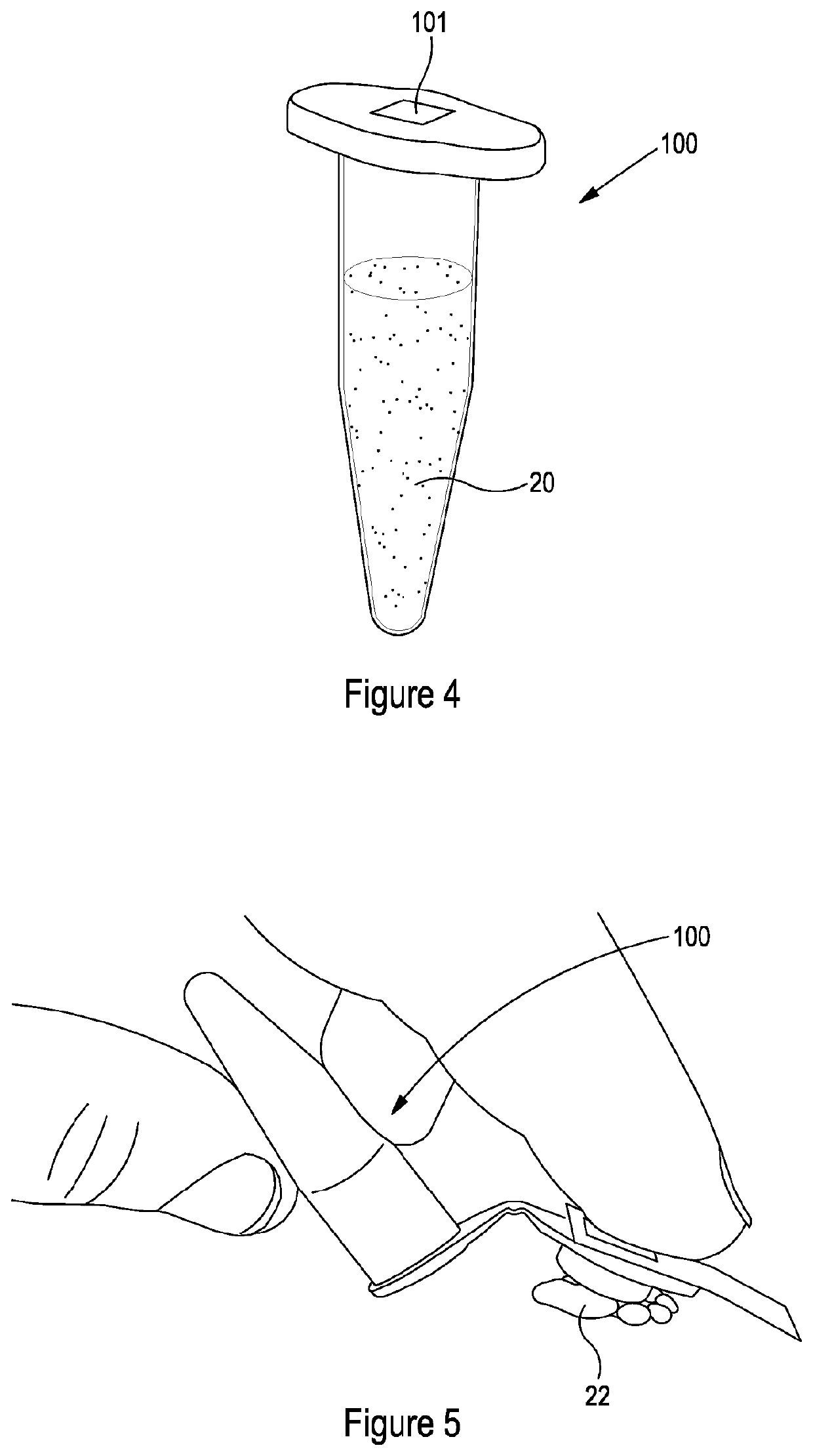Sample container with integrated internal reflection element
a technology of internal reflection and sample container, which is applied in the field of sample container with integrated internal reflection element, can solve problems such as affecting the absorbance profile of sampl
- Summary
- Abstract
- Description
- Claims
- Application Information
AI Technical Summary
Benefits of technology
Problems solved by technology
Method used
Image
Examples
example 1
Milk Adulteration
[0134]The adulteration of milk is a significant problem that is particularly prevalent in developing and underdeveloped countries, largely due to the absence of monitoring and law enforcement. As shown in Moore et al., Development and Application of a Database of Food Ingredient Fraud and Economically Motivated Adulteration from 1980 to 2010, Journal of Food Science, 2012; 77:R108-16, milk powder is the second most likely food item to be adulterated, after olive oil. Adulterants to milk powder include non-harmful additions such as vegetable protein, whey, water or the milk of other species but also, a number of harmful additions including melamine, hydrogen peroxide, caustic soda, urea and even paint.
[0135]Identification of target molecules (e.g. adulterants) in liquids (e.g. milk), was undertaken wherein the cap, sample receiving element of the present invention was used to obtain spectra of adulterated milk in the form of whole, semi-skimmed and skimmed milk.
[0136...
example 2
[0141]The adulteration of alcohol is another significant issue that can have life-threatening impacts. Whisky adulteration is a good example of this, where additives are commonplace, as well as the fraudulent labelling of inferior products.
[0142]As shown in FIG. 10 (a spectra obtained using a sample located on an IRE as part of the present invention, whisky has a strong spectral fingerprint that has clearly identifiable O—H bending and stretching peaks, as well as contributions from key carbohydrate components.
[0143]Changes to this spectral signature are easily observed when the composition of the sample is altered.
[0144]FIG. 11A demonstrates unprocessed spectra obtained from a sample located on an IRE as part of the present invention. The samples therein are of whisky adulterated with different amounts of water. Small changes can be observed between the raw spectra for each dilution, however these are more apparent in the PCA scatter plot shown in FIG. 11B. Here, each stage of dilu...
example 3
Adulteration
[0145]As previously mentioned, the adulteration of olive oil is the most common example of food fraud to be found. As little as 10% of olive oil produced meets the standard of extra-virgin oil; however up to 50% is labelled as extra-virgin. Commonly high quality oil is diluted with cheaper oils, including vegetable oils. The ability to detect this dilution using a high-throughput sampling method using the present invention, may allow rapid screening of potentially adulterated oils.
[0146]As shown in FIG. 12 (Mean unprocessed FTIR spectra of extra virgin olive oil (EVO), sunflower oil (SFO) and sesame oil obtained using the present invention), food oil has a strong spectral fingerprint, however chemically these oils differ in their relative mono- and poly-saturated fat content, however the raw spectra look very similar, with only very subtle peak shifts.
[0147]Theoretically, the dilution of extra virgin olive oil with a cheaper oil, such as sunflower oil, would prove more c...
PUM
| Property | Measurement | Unit |
|---|---|---|
| thickness | aaaaa | aaaaa |
| angle | aaaaa | aaaaa |
| angle | aaaaa | aaaaa |
Abstract
Description
Claims
Application Information
 Login to View More
Login to View More - R&D
- Intellectual Property
- Life Sciences
- Materials
- Tech Scout
- Unparalleled Data Quality
- Higher Quality Content
- 60% Fewer Hallucinations
Browse by: Latest US Patents, China's latest patents, Technical Efficacy Thesaurus, Application Domain, Technology Topic, Popular Technical Reports.
© 2025 PatSnap. All rights reserved.Legal|Privacy policy|Modern Slavery Act Transparency Statement|Sitemap|About US| Contact US: help@patsnap.com



